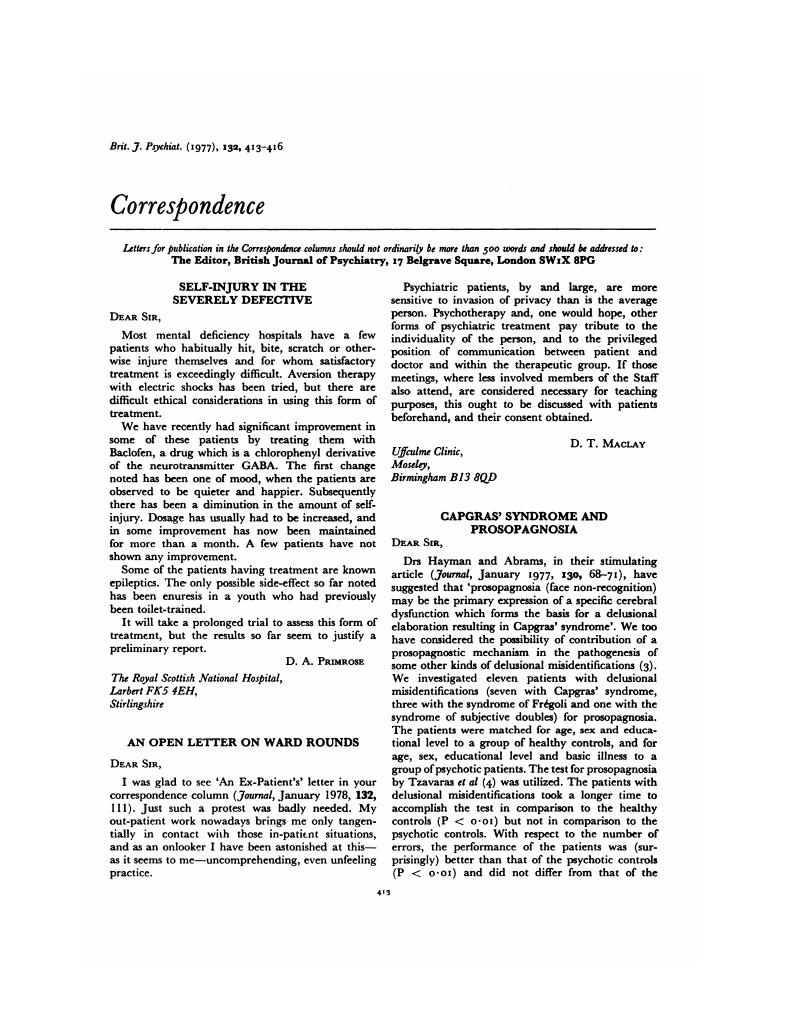Crossref Citations
This article has been cited by the following publications. This list is generated based on data provided by Crossref.
GLICKMAN, LEWIS
1979.
On Blaming the Bureaucracy.
American Journal of Psychiatry,
Vol. 136,
Issue. 7,
p.
994-a.
1979.
On blaming the bureaucracy.
American Journal of Psychiatry,
Vol. 136,
Issue. 7,
p.
994.
CHRISTODOULOU, GEORGE N.
and
MALLIARAS, DEMETRIOS E.
1979.
Misidentification Syndromes: Erotic and Psychomotor Components.
American Journal of Psychiatry,
Vol. 136,
Issue. 7,
p.
994.
ROTHENBERG, ALBERT J.
1979.
Dr. Rothenberg Replies.
American Journal of Psychiatry,
Vol. 136,
Issue. 7,
p.
993.
Jeeves, M. A.
1986.
Aspects of Face Processing.
p.
455.
Peng, Catherine Yee-Yuen
and
Campbell, Ruth
1989.
Developments in Clinical and Experimental Neuropsychology.
p.
167.
Khanna, Rakesh
and
Khanna, Namita
1991.
Delusions of Substitution and Diabetes Mellitus.
The International Journal of Psychiatry in Medicine,
Vol. 21,
Issue. 1,
p.
105.
1994.
The frontal lobes and content-specific delusions.
The Journal of Neuropsychiatry and Clinical Neurosciences,
Vol. 6,
Issue. 4,
p.
455.
Debruille, Jacques B
and
Stip, Emmanuel
1996.
Syndrome de Capgras: Perspectives ouvertes par la neuropsychologie cognitive.
The Canadian Journal of Psychiatry,
Vol. 41,
Issue. 4,
p.
245.
Edelstyn, N. M. J.
and
Oyebode, F.
1999.
A review of the phenomenology and cognitive neuropsychological origins of the Capgras syndrome.
International Journal of Geriatric Psychiatry,
Vol. 14,
Issue. 1,
p.
48.
Luauté, Jean-Pierre
2009.
Neuropsychiatrie cognitive des délires d’identification des personnes. Une revue historico-critique.
L'Évolution Psychiatrique,
Vol. 74,
Issue. 1,
p.
93.




eLetters
No eLetters have been published for this article.